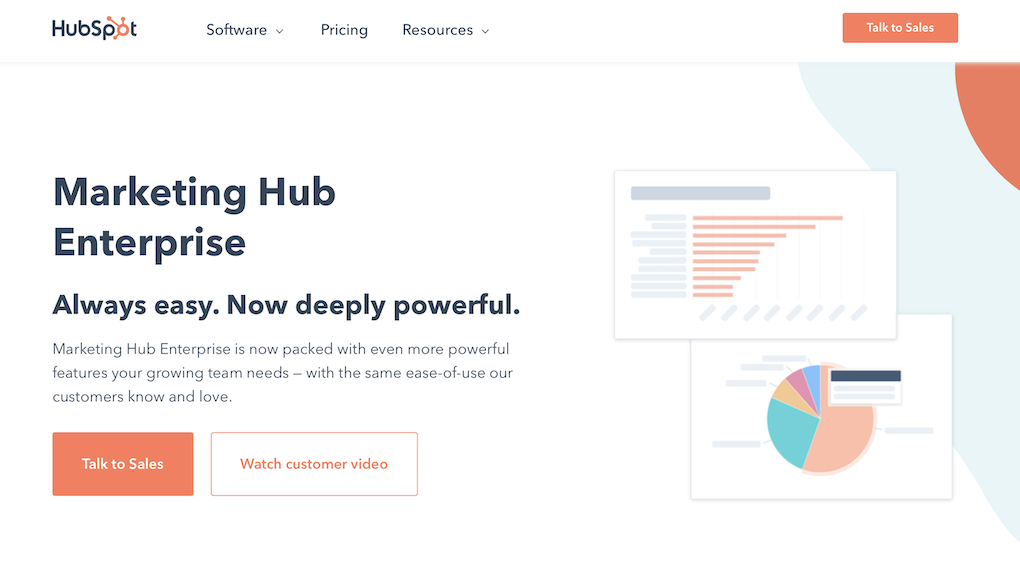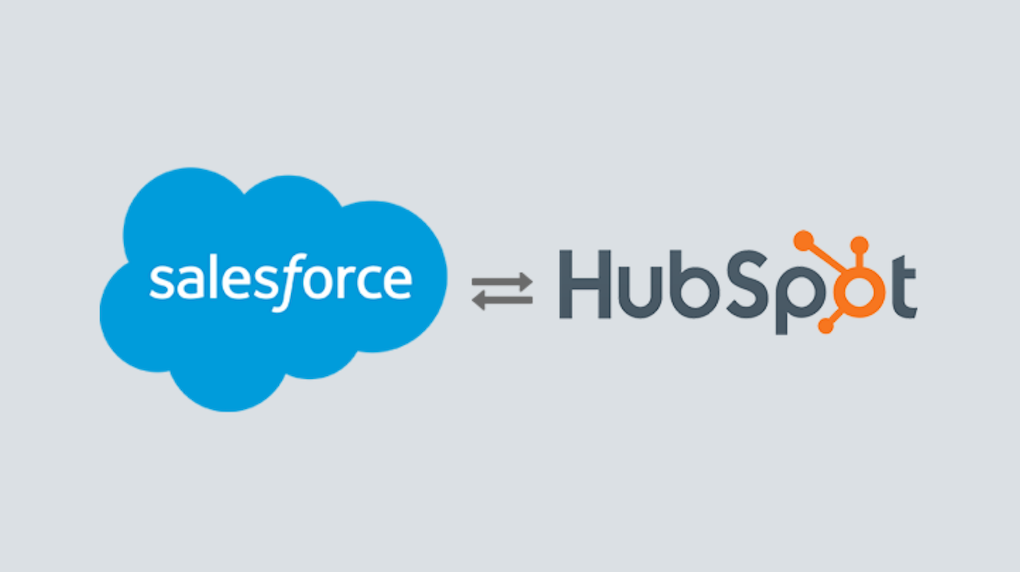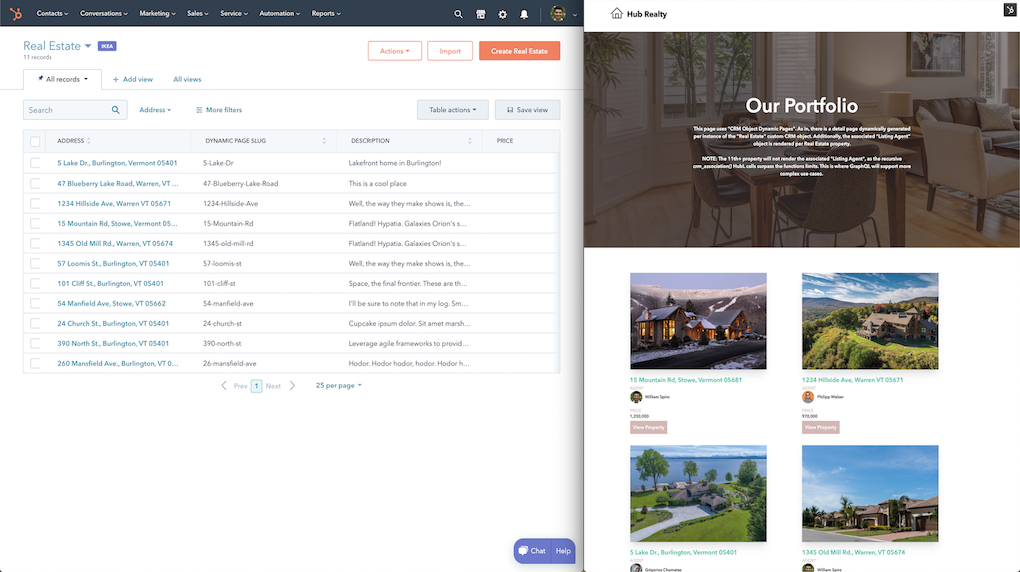Choosing a CRM at the enterprise level is like choosing a prosthetic limb. You need power, functionality, and the ability to use it effectively in every activity your business performs. While many businesses choose to grow their CRM from the start, the time will inevitably come when you need to upgrade or revamp your system.
We reached this fork in the road in 2016. Prior to becoming HubSpot Enterprise users, our sales and marketing operations were sustained on the Salesforce CRM that was customized to our needs. As our business grew, we wanted something that would take us from good and get us all the way to great.
In addition, we knew any new CRM we adopted had to be:
- Intuitive for our team: Salesforce was highly customizable but some of our entry-level employees found it difficult to navigate.
- Powerful enough to scale with us: Salesforce was great for our needs when we first started, but as the company grew, it began to show its limitations on how much data can be stored.
- Modern and easy on internal resources: The Salesforce interface is old school, which makes it difficult for employees new to CRM or used to more modern platforms.
This HubSpot Enterprise review will help you determine whether making the migration is right for your business. Plus, we'll share some of the lesser-known features this platform offers to its enterprise users.

Why go HubSpot?
If you're thinking of making the shift to HubSpot Enterprise, you're likely in a position where growth is either stunted or plateaued due to internal capacities. Your business needs a CRM that has the tools and resources to grow with you while making it easier for your team to do their best work.
One of the main reasons we made the switch was to bridge the gap between sales and marketing. Often, activities that marketing engages in need to be appended to the customer record — whether that be content they consumed or an ad campaign that led them to the website. These activities can help inform sales by offering lead capture information such as emails, websites, and company details. HubSpot Enterprise allows our sales and marketing teams to share data seamlessly to work more effectively towards common business goals.
We also wanted our CRM to be an ultra-powerful engine that could include features like CMS while integrating lead info, social, search ads, and more. With HubSpot, we were able to build a full-scale dynamic website that shows custom content to customers at different stages in our sales funnel. This was a total game changer.
The switch has improved our ability to measure ROI on marketing spend. HubSpot Enterprise offers a number of out-of-the-box reports that are easily accessible by everyone in the company, even those new to analytics and reporting tools. Everyone can get up to speed quickly because there is no need for lengthy training sessions or documentation. We’ve also built custom dashboards by department to help each team focus on the metrics that matter most to them.
In addition, the HubSpot Ads plugin is remarkable for tracking the source and the cost per lead for B2B companies. Its plug-and-play functionality with Google Ads, Facebook Ads, and LinkedIn Ads is quick and easy to set up. Plus, the knowledge gathered here will help prove ROI and justify advertising spend in these channels. In short, it’s a game-changer.
How it started: Migrating from Salesforce to HubSpot Enterprise
Before the switch in 2016, our leads in Salesforce were often left confused or frustrated with the lag time between communication and engagement. This lag time was the result of multiple systems being used simultaneously without adequate communication between them. This led to missed opportunities as leads would fall through the cracks of communication gaps across teams. We needed something better… and more effective. Enter: HubSpot Enterprise.

The migration process, which included a full data backup of our Salesforce instance before importing it into HubSpot Enterprise, went off without any major complications. HubSpot’s data import tool is easy to use, with a simple wizard that walks users through the process. The metadata of our contacts was mapped accurately during this step, so there wasn't any need for manual tweaking after the files were imported into HubSpot CRM. To note, we did run both CRMs side-by-side for several months as a precaution.
It became clear early on that HubSpot Enterprise was a great choice for our team. The HubSpot CRM platform offers users a wealth of features and functionality, while its intuitive interface makes it easy to navigate. We were able to improve the quality of data in our CRM, and we had more accurate information at hand to serve our customers.
How it’s going: A dynamic website built for returns
This year we did something bold. We rebuilt our website completely on the HubSpot content management system (CMS) and are using dynamic content to better serve information to our website visitors. Users who visit our site receive content based on what we know about them and what we’ve stored in the HubSpot Enterprise CRM.

We integrated data lookup tech, using Clearbit, which allows us to reduce the number of form fields on our website to two — which is an 80% reduction. We’re able to do this because HubSpot allows us to do data lookups, in real-time, to complete fields based on the user's email domain. Information such as geographic location, company size, and annual revenue can all be seamlessly collected from two simple form fields.
As well, we’ve plugged in scheduling software that reads our sales team’s Google Calendars and assigns new leads or meetings to the people who are best qualified and have the capacity. This automation has sped up our response times to new leads as well as how fast we can engage with potential customers; reducing this time to minutes instead of hours.
Our HubSpot Enterprise review? You’ve gotta try it
Although this has been our own experience, we have helped many others make the switch and improve their HubSpot processes - and like us, they haven’t looked back.
The HubSpot Enterprise platform is a fully integrated system that makes workflows seamless between marketing, sales, and service teams. The level of detail generated, combined with the ability to track which groups or individual agents are responsible for each lead or sale, makes it an invaluable tool.
HubSpot Enterprise has not only provided our teams with a single platform for all of their business needs, but it’s given them time to engage prospects and improve our customer service overall. All of this has led to increased efficiency and greater ROI on marketing efforts.
Ready to get started with HubSpot? Major Tom is a HubSpot Gold Partner and we’d love to share our expertise. Check out our HubSpot consulting services or get in touch to learn more.